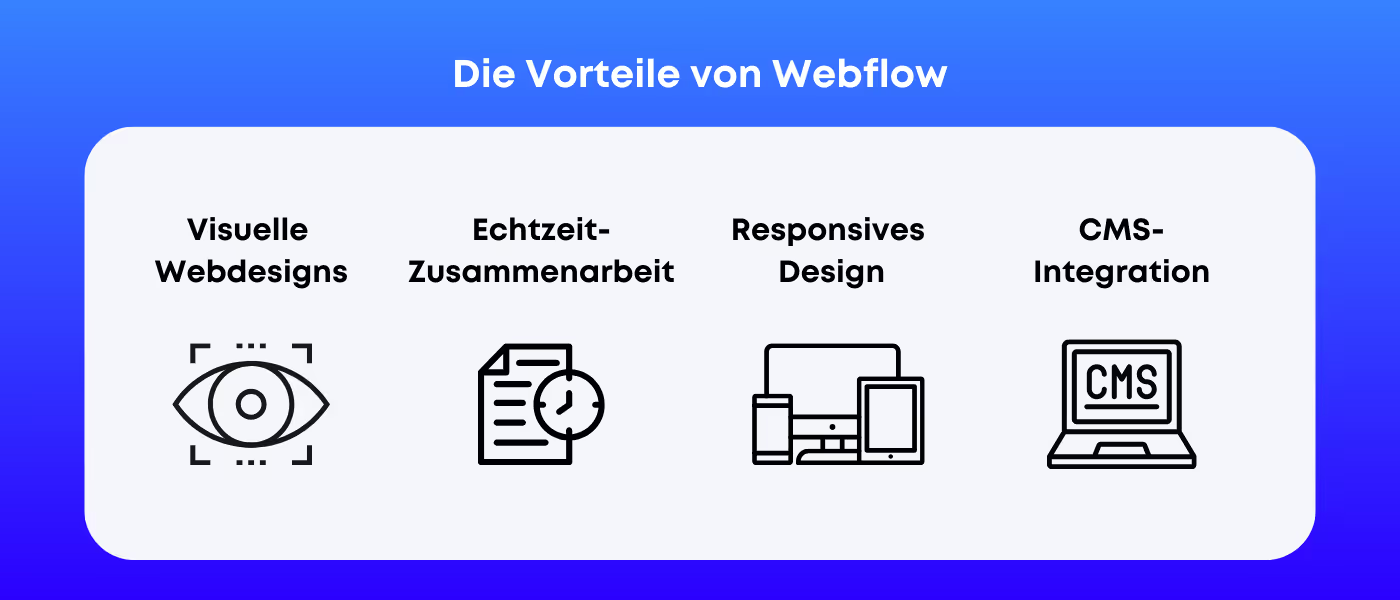The future of web design and development
In an era where the online presence of companies and individuals is critical, the way websites are designed and developed plays an increasingly important role. Traditional web design based on HTML, CSS, and JavaScript often required complex collaboration between designers and developers, resulting in long development cycles and sometimes sub-optimal results.
That's where Webflow comes in, a platform that has revolutionized web design and development. Webflow allows designers to build websites from scratch without writing a single line of code. This platform has not only changed the way we build websites, but it has also changed the future of all web design and development.
The challenges of traditional web design
Before we get into the future, let's take a look at the challenges of traditional web design. In the past, creating a website was often a complex task that required specialized knowledge of HTML, CSS, JavaScript, and other programming languages. This meant that designers and developers often worked in separate silos, making collaboration difficult and extending time to market.
Webflow: A revolution in web design
Webflow has recognized these challenges and offers an innovative solution. This platform allows designers to create appealing websites without writing a single piece of code. Thanks to Webflow's visual web design tool, designers can turn their creative ideas directly into reality. The platform offers an intuitive drag-and-drop user interface that allows users to place, customize, and animate elements on the page without any programming knowledge.
The benefits of Webflow
Webflow offers a number of benefits that make it the future of web design and development.

Visual web design, without compromises
One of the outstanding features of Webflow is its visual web design. Designers can put their creative ideas straight into action with the help of an easy-to-use drag-and-drop interface. The ability to see changes in real time allows designers to implement their visions instantly without having to wait for developers. This not only shortens development times, but also promotes creativity, as designers have more freedom to design.
Real-time collaboration for efficient projects
Many projects involve teamwork, and Webflow encourages real-time collaboration. Multiple team members can work on a project at the same time and see changes in real time. This seamless collaboration between designers, developers, and other team members significantly speeds up the entire development process. There will be fewer misunderstandings between the various teams due to the visual presentation of the website and the ability to communicate directly.
Responsive design for all devices
Responsive design requirements are more important today than ever. Websites must look and function well on all devices, from desktop computers to tablets to smartphones. Webflow provides powerful tools to ensure that your website looks great on every device. Design elements can be easily customized to ensure that your website runs smoothly on various screen sizes and resolutions.
CMS integration and dynamic content
Webflow isn't limited to static websites. The platform also offers powerful content management features (CMS) that enable you to create and manage dynamic content. This allows companies to easily maintain and update blogs, news feeds, and product pages without relying on external CMS solutions. Webflow provides the flexibility needed to build a wide range of websites.
Web design and development over time
Web design and development play a key role. These two areas are crucial not only today but also tomorrow. Webflow is at the forefront of these changes and is well positioned to shape the future of the digital space. With evolving usability, mobile experience, and accessibility requirements, Webflow is expected to continue to provide innovative solutions that redefine the way we use the Internet. Webflow is not only a platform for the present, but also a pioneer for the future of web design and development.
New opportunities in web design and e-commerce
With its powerful combination of visual web design, real-time collaboration, responsive design, and CMS integration, Webflow has the potential to fundamentally change the way websites are built. One area where Webflow is already growing strongly is e-commerce. The platform offers extensive options for creating online shops, from product presentation to processing payments. Companies can build custom e-commerce websites that integrate seamlessly with their brands.
This versatility and adaptability make Webflow a tool that will shape the digital landscape in the coming years. Rapidly evolving technology and increasing user expectations require solutions such as Webflow that can continuously innovate and meet the needs of the modern online world. Whether it's designing a stunning online magazine, developing an e-learning platform, or creating a user-friendly shopping experience, Webflow provides the tools and vision to achieve these goals.
conclusion
In conclusion, Webflow is not only a platform for the present, but also plays a pioneering role in shaping the future of web design and development. With its easy-to-use drag-and-drop interface, real-time collaboration, responsive design, and CMS integration, Webflow provides powerful tools to build websites that not only look great but also meet the ever-changing needs of the digital world.
Webflow's versatility spans across various industries, including the thriving e-commerce space, and enables companies to create custom online stores that are seamlessly integrated with their brands.
The active Webflow community and wealth of resources help to continuously improve the platform and drive innovation. The platform enables designers, developers, and teams to implement their creative ideas more efficiently and effectively.









Recommend this post